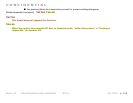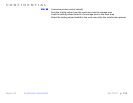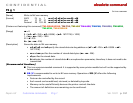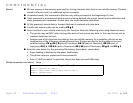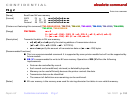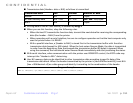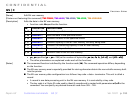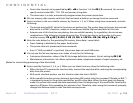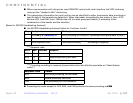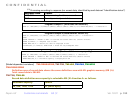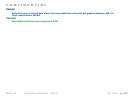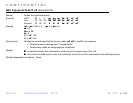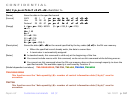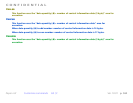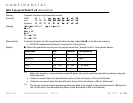CONFIDENTIAL
Paper roll Customize commands GS ( C
Ver. 10.01 p. 556
• Data is the character string specified by
d1... dk
in Function 1 of the GS(C command. You cannot
specify control codes 00H – 1FH, 7FH as character string data.
• The terminator is a code, automatically assigned when the printer stores data.
■ NV user memory data remains valid until the host sends a deletion or storage function command.
■ Data is written to the non-volatile memory by Function 1, 2, or 3. When using those commands, note the
following:
• The printer may be BUSY while the functions are performing. The printer does not process any received
data while it is BUSY; therefore, under no circumstances should the host send data at this time.
• Excessive use of this function may destroy the non-volatile memory. As a guideline, do not use any
combination of the following commands more than 10 times per day for writing data in the non-
volatile memory: FS q, GS(A, GS(C, GS(E, GS(L / GS 8 L, GS ( M, GS g 0, FS g 1.
■ Note the rules below for the operating NV memory (store data / cancel data):
• Paper feeding is disabled by the paper feed button.
• The printer does not process real-time commands.
• Even if “ASB is enabled” is specified, the printer does not send ASB status.
■ You can use the NV user memory as an index of note for the following:
• Customize information: index of the NV bit image definition contents, title of setting by GS(M
• Maintenance information: ink ribbon replacement date, telephone number of repair company, etc.
[Notes for transmitting processing of the block data]
■ Data is send by Function 2, 3, 4, or 5. When you use these functions, obey the following rules.
• When the host PC transmits the function data, transmit the next data after receiving the corresponding
data from the printer.
• With serial interface printers, use this function when the host is READY.
• With a parallel interface printer, data sent (excluding ASB status) with this command (“Header to NUL”)
is temporarily stored in the printer send buffer, as with other data. When the host goes into Reverse
mode, the printer then sends the data sequentially from the beginning of the send buffer. Send buffer
capacity is 99 bytes. Data exceeding this amount is lost. Therefore, when using this command, promptly
change into Reverse mode to start the data receive process.



